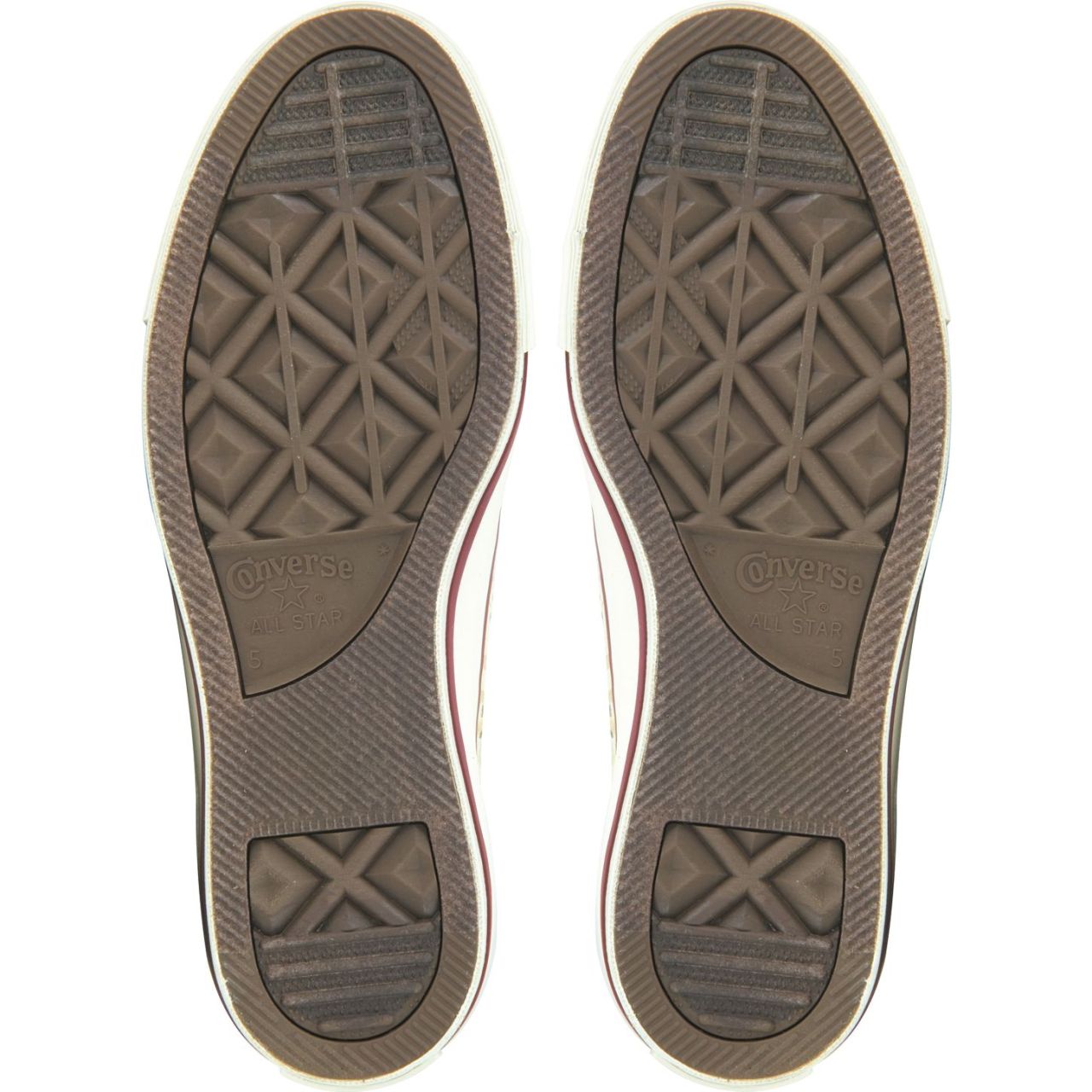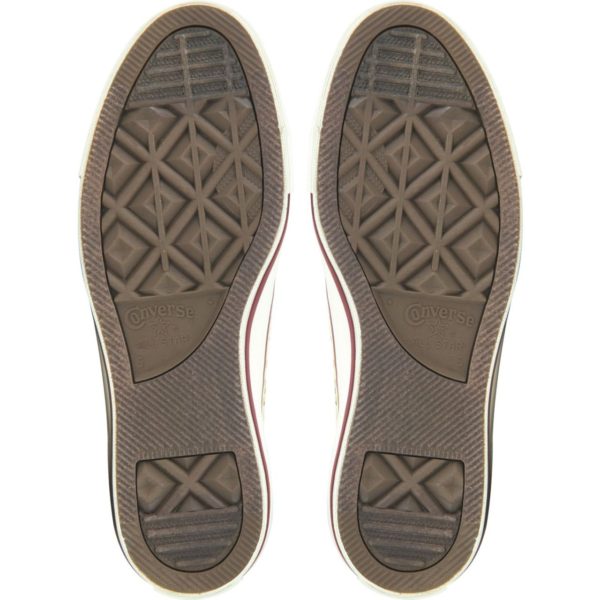
Following yesterday’s post on sneakers, I thought I’d share this great find by GazEtc. If you look at the bottom of your Chuck Taylor All Stars, you’ll notice that certain parts of the sole are fuzzy. The hairs are hard to notice at first, especially if you’ve already worn your shoes, ‘cause your soles will just look like they’ve collected gunk off the street. If you look closer, however, you’ll notice that little hairs are embedded into the rubber.
Why? GazEtc investigated the patent for Chuck Taylors and found that they’re actually classified as house slippers with fabric bottoms, rather than sneakers with rubber soles. As he explains:
Since my shoes were made in China, they were subject to an import tariff when they were shipped to the United States. And the import tariff is much lower for shoes with fuzzy fabric soles (like house slippers) than it is for shoes with rubber soles (like sneakers). According to the inventors, changing the shoe material can lower the duty from 37.5% down to just 3%.
To benefit from a lower tariff, it isn’t necessary to cover the entire sole with fabric. According to the inventors, “a classification may be based on the type of material that is present on 50% or more of the bottom surface.” This explains why the “fabric” fuzz extends mostly around the edges of my shoes, where it can take up a lot of area without interfering too much with the traction of the bare-rubber centers.
So the invention embodied in my shoes is not a technological advancement. It actually seems to be a small step backward in quality. Instead, my shoes embody an advancement in “tariff engineering.” But perhaps, by putting up with a bit of fuzz, I can pay just a bit less for each new pair of sneakers.
You can see the original patent for Chuck Taylors here. The Smithsonian also has an interesting clip about how Marvel went to court to argue that the the X-Men weren’t human in order to get lower tariff rates.








